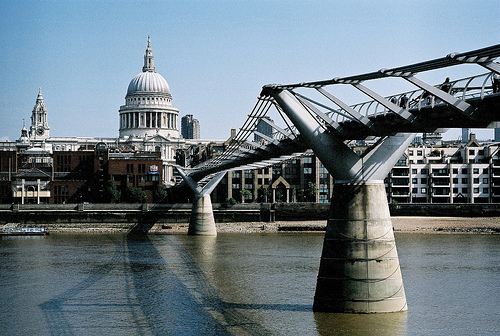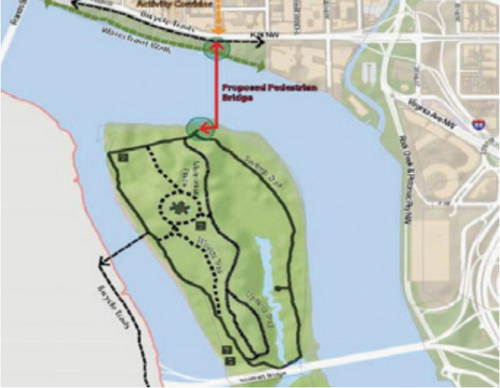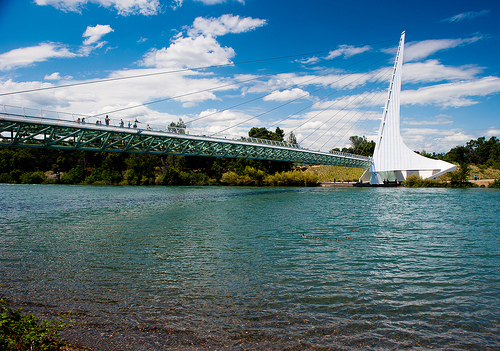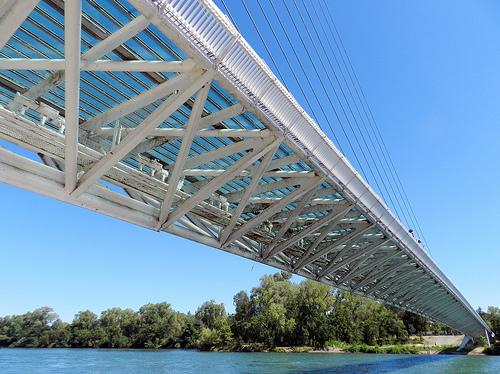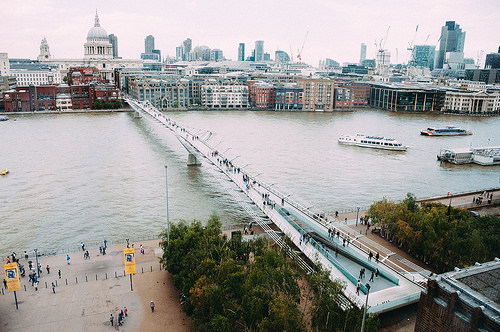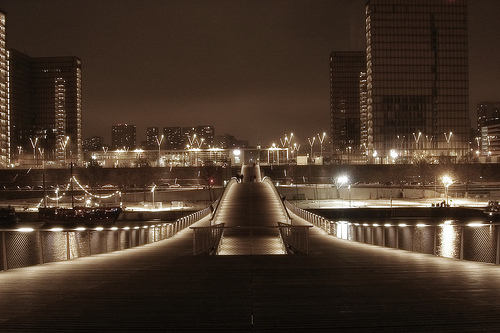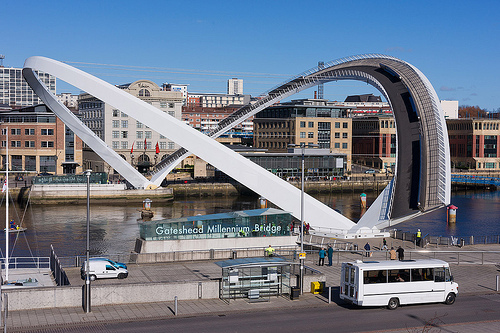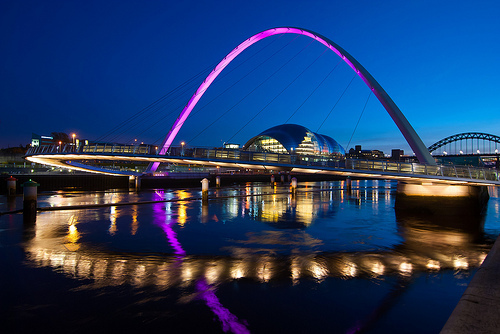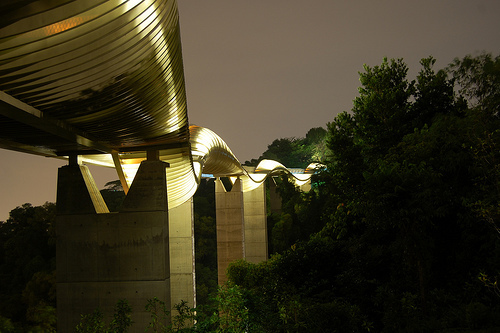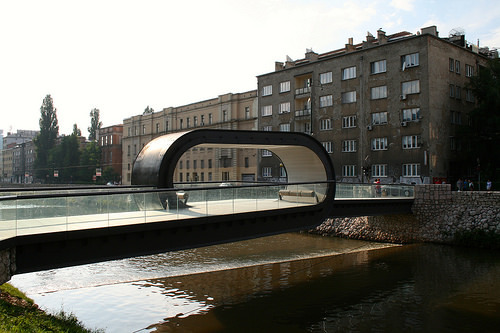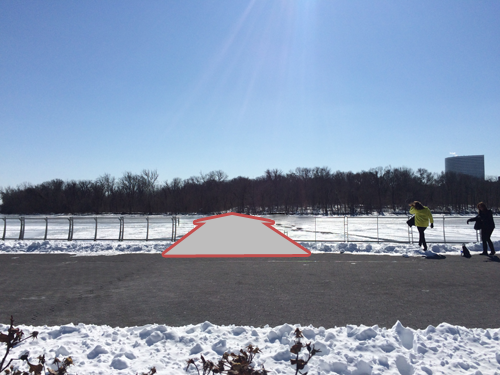Cities worldwide are building beautiful, landmark pedestrian and bicycle bridges. Could Georgetown be next?
A new bicycle and pedestrian bridge may one day connect Georgetown with Roosevelt Island. Some recent bridges like this in other cities have become iconic landmarks. Could DC do the same and compensate for its freqently lackluster bridge designs? Here are a few of the world’s great pedestrian bridges.
Such a bridge was part of Georgetown’s recent 15-year action plan and made it into DC’s MoveDC citywide transportation plan last year.
Many cities have built new bridges as opportunities to showcase distinctive design while adding vital pedestrian links. The London Borough of Wandsworth is sponsoring a design competition right now for a new footbridge across the Thames.
Spanish architect and engineer Santiago Calatrava designed the glass-floored Sundial Bridge across the Sacramento River in Redding, California.
London’s Millennium Bridge opened in 2000 to bridge the Thames between the Tate Modern to St. Paul’s Cathedral. The bridge is tall enough to allow river navigation, but short enough not to obstruct the historically protected view corridor of the cathedral.
The Simone de Beauvoir Footbridge has been undulating across the Seine in Paris since 2006.
The crescent Gateshead Millennium Bridge in Newcastle upon Tyne, England, tilts back to allow ships to pass.
The Henderson Waves bridge soars 120 feet over a valley in the Southern Ridges park of Singapore. The bridge deck provides shade and seating areas to view the park valley.
Although it spans a relatively short distance, Sarajevo’s Festina Lente Bridge features a playful loop that shades a seating area midway across the bridge.
Could one of these bridges come to DC?
Such a connection would provide many advantages. Although the island is inside the boundaries of the District of Columbia, visitors can only access it from Virginia. Visiting the island requires a half-mile walk or bike ride from Rosslyn down the Mount Vernon Trail. There’s a small parking lot on the Virginia shore, but it fills up quickly on warm weekends, and drivers can only reach it from the northbound GW Parkway.
A bridge from Georgetown would give District residents and visitors easier access to this wooded and marshy parkland, which serves as a stark contrast to the dense urbanization of Georgetown and Foggy Bottom.
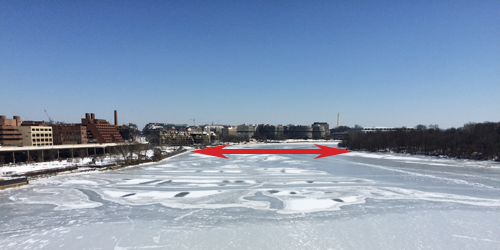
Georgetown Waterfront Park (left) and Roosevelt Island (right) as viewed from the Key Bridge. Image by the author.
There isn’t money for the bridge today. MoveDC lists the bridge as a second-tier priority, meaning it is not within DC’s six-year capital plan. DDOT planner Colleen Hawkinson said external factors, such as outside funding or public support, could shift the bridge’s priority.
Even if funding arises, multiple federal agencies will have to act. The National Park Service controls the island and would have to agree to any changes. MoveDC classifies the bridge as a bicycle transportation project, but the National Park Service, which controls the island, prohibits cycling there. The National Capital Planning Commission and the Commission on Fine Arts, which are providing advice on the Frederick Douglass Bridge replacement, would play a strong role in reviewing designs.
Any project will require an environmental analysis which could take years (one for a proposed boathouse on Park Service land on the Arlington shore of the Potomac is dragging on into its third year, for example). If the bridge does come to fruition, it will be years away, but it would be a major asset to help people enjoy and appreciate the Potomac River.

